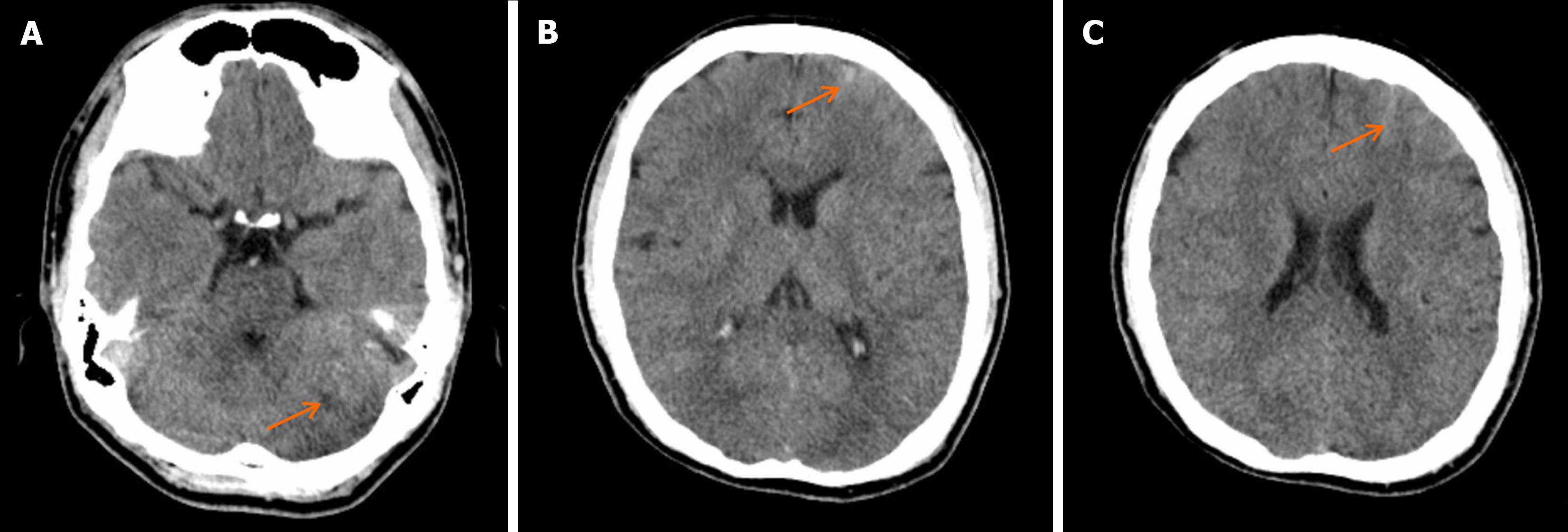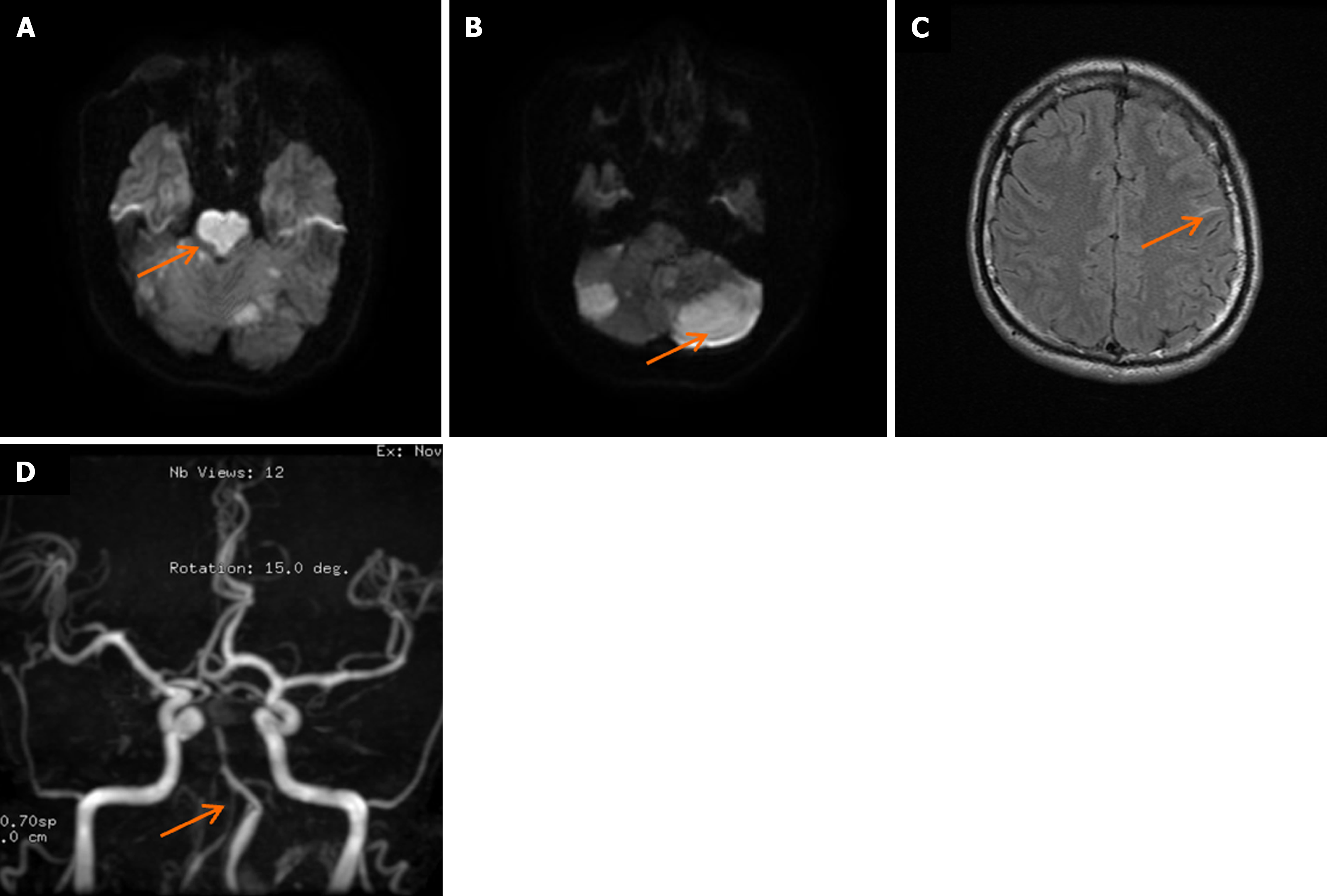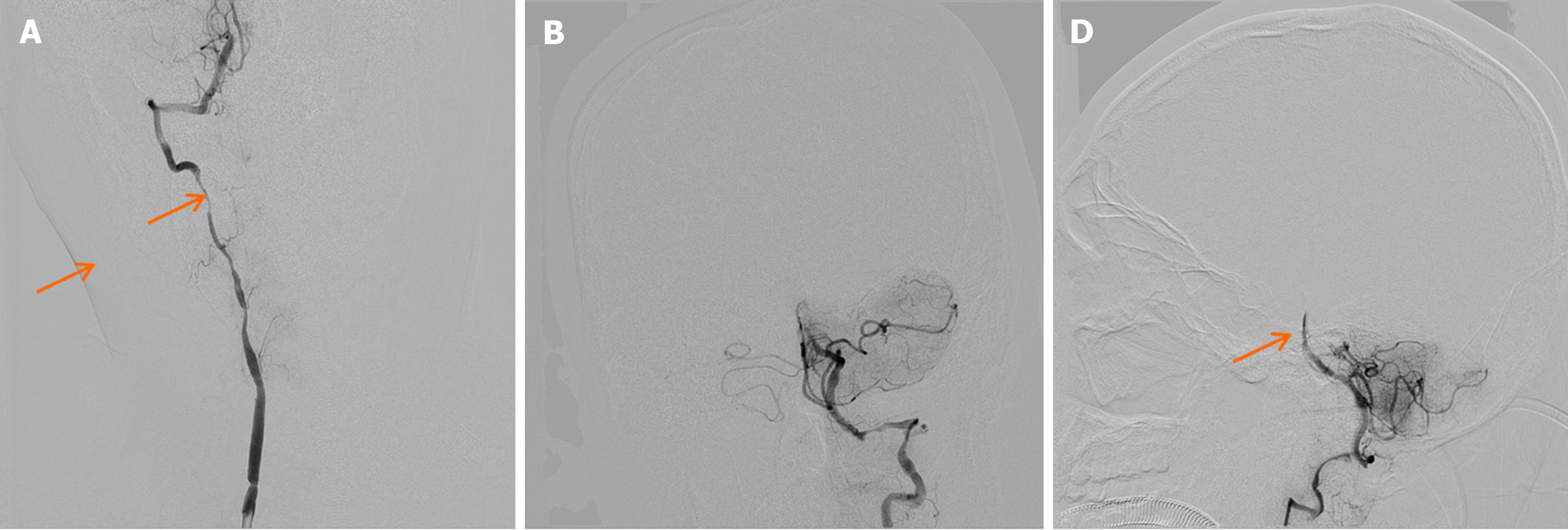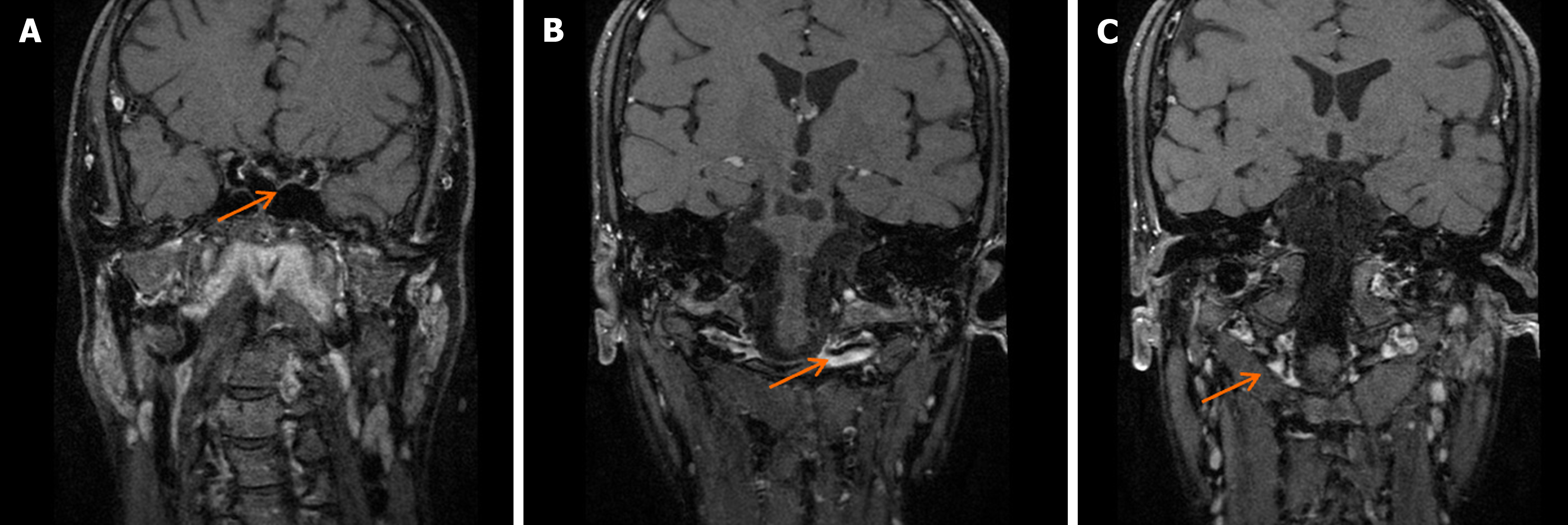Copyright
©The Author(s) 2024.
World J Radiol. Oct 28, 2024; 16(10): 593-599
Published online Oct 28, 2024. doi: 10.4329/wjr.v16.i10.593
Published online Oct 28, 2024. doi: 10.4329/wjr.v16.i10.593
Figure 1 Head computed tomography image upon admission.
A: Bilateral cerebellar hemispheres show signs of suspicious ischemia; B: Possible hematoma in the left frontal lobe; C: Left frontal sulci subarachnoid hemorrhage.
Figure 2 Admission head magnetic resonance imaging image.
A: Diffusion weighted imaging (DWI) sequence shows brain stem infarction; B: DWI sequence shows bilateral cerebellar hemispherical infarcts; C: Flair sequence revealed subarachnoid hemorrhage in the left frontal sulci; D: Magnetic resonance angiography revealed narrowing in the right vertebral artery, left vertebral artery, basilar artery, and both posterior cerebral arteries.
Figure 3 Digital subtraction angiography image upon admission.
A: Multiple stenosis of the right vertebral artery; B: Left vertebral artery stenosis; C: Digital subtraction angiography showed poor posterior cerebral artery imaging.
Figure 4 High-resolution magnetic resonance imaging images upon admission.
A: Multiple dissections of the right vertebral artery at segments V2–4 complicated with thrombosis; B: Left vertebral artery (cervical 1 transverse foramen plane) dissection with thrombosis; C: Basilar and posterior cerebral arteries with thrombosis in false lumen.
Figure 5 High-resolution magnetic resonance imaging images 5 mo after onset.
A: The right vertebral artery still has a narrow lumen despite the absorption of the wall thrombus; B: Absorption of thrombus in the left vertebral artery, with local thickening indicating new tissue growth; C: The thrombus was still present at the top of the basilar artery, but the right posterior cerebral artery was clear.
- Citation: Zhang HB, Duan YH, Zhou M, Liang RC. High-resolution magnetic resonance imaging in the diagnosis and management of vertebral artery dissection: A case report. World J Radiol 2024; 16(10): 593-599
- URL: https://www.wjgnet.com/1949-8470/full/v16/i10/593.htm
- DOI: https://dx.doi.org/10.4329/wjr.v16.i10.593

















